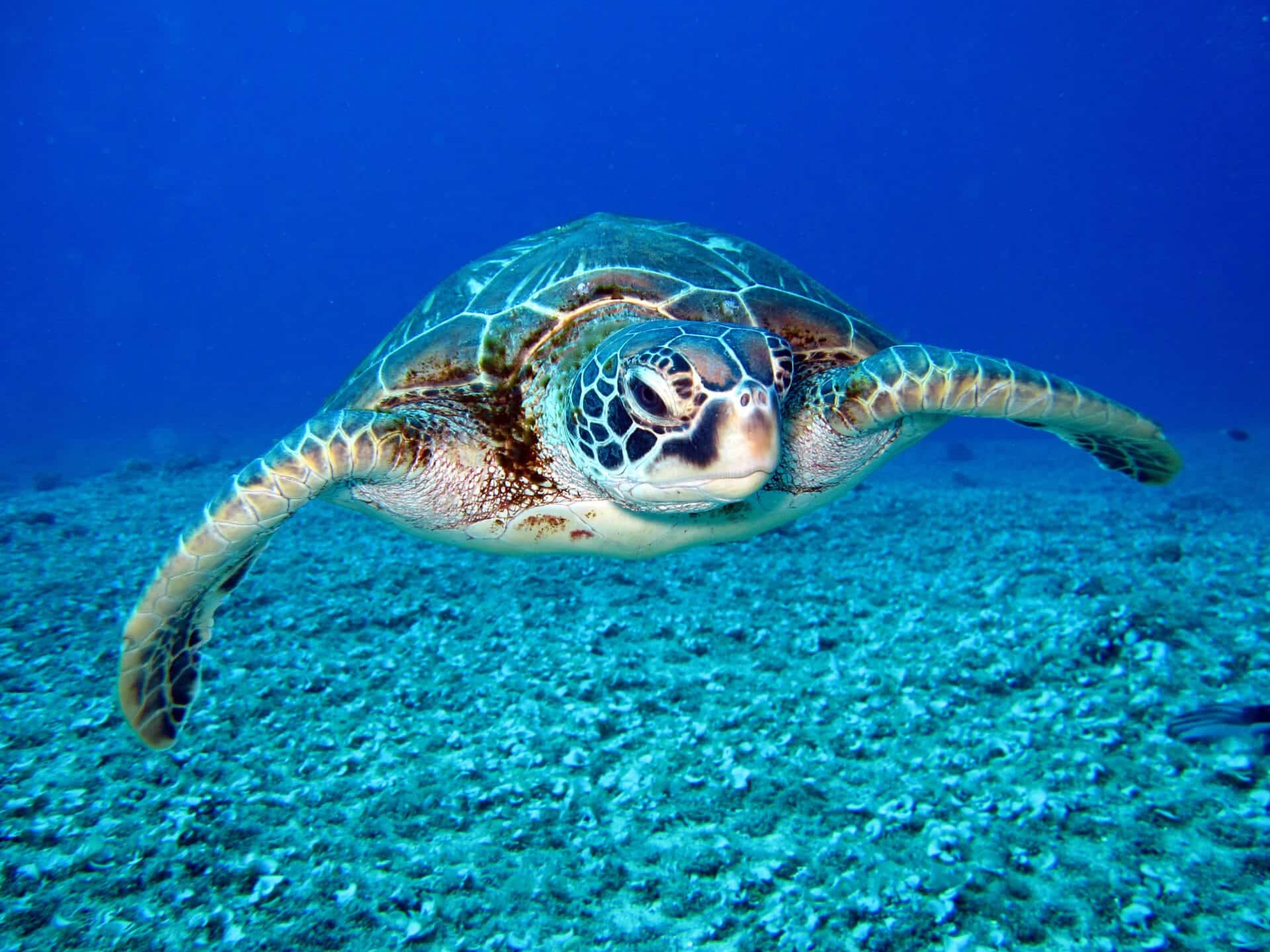Turtles are amphibious creatures that spend part of their lives in water and part on land. They need to be in water to breathe, but how long can a turtle be out of the water? This article will explore the amount of time a turtle can remain out of the water and other factors that can affect this time.A turtle can stay out of water for several hours, depending on the species and environmental conditions. Generally, aquatic turtles such as the red-eared slider can remain out of water for 4 to 7 hours, while land turtles such as box turtles can stay out of water for much longer periods of time.
Factors Affecting How Long A Turtle Can Survive Out Of Water
Turtles are amphibious animals, meaning they are adapted to living on both land and in water. While the amount of time a turtle can survive out of water varies depending on the species and size, there are several factors that can affect their ability to survive. Temperature, humidity, environmental conditions, and access to food and water are all elements that can determine how long a turtle can survive out of water.
Temperature is one of the most important factors determining how long a turtle can stay out of water. Turtles that live in warmer climates tend to be more tolerant of hot temperatures and can survive longer without access to water. In colder climates, turtles need access to water for warmth, as cold temperatures will cause them to become inactive or even freeze if left out for too long.
Humidity also plays an important role in how long a turtle can stay out of water. High humidity levels make it easier for turtles to regulate their temperature, allowing them to remain active longer without the need for access to water. Low humidity levels can cause dehydration and other health problems if the turtle is not able to find a source of moisture.
The environment a turtle is living in will also influence its ability to survive out of water. Turtles living in dry environments may not be able to find enough moisture or food sources and may become dehydrated or starve if left without access to water for too long. Turtles living in wetter environments with plenty of vegetation may be able to find food and moisture more easily, allowing them to remain active longer when away from a source of water.
Finally, access to food and water will have an effect on how long a turtle can stay out of the water. If there is no source of food or moisture available nearby, it may be difficult for the turtle to remain active for any length of time without becoming dehydrated or starving. Therefore, it is important for turtles living in environments with limited resources have easy access to these resources whenever possible.
In conclusion, temperature, humidity, environmental conditions, and access to food and water are all factors that affect how long a turtle can survive out of water. These elements should all be taken into consideration when assessing the health and safety needs of any given species or individual animal when attempting determine how long they can stay away from their aquatic habitat before needing replenishment.
Signs of a Turtle in Need of Water
Turtles need access to water in order to stay healthy and thrive. If your pet turtle is not getting enough water, you may notice some signs that indicate they need more. Common signs of dehydration in turtles include a sunken or dry-looking shell, an overall lack of energy and activity, and dry or sunken eyes. You may also notice your turtle has difficulty staying submerged underwater for extended periods of time. Other signs include shedding skin, rubbery limbs, and discolored or cracked shells.
If you observe any of these signs in your turtle, it is important to provide them with clean water to help them rehydrate. Make sure the water is at least two to three inches deep so that your turtle can submerge themselves completely if they wish. You can also add some aquatic plants to the water as a source of food and natural filtration. Additionally, check the temperature of the water regularly to ensure it remains within the correct range for your pet turtle’s species. By providing them with adequate access to clean water and regular monitoring, you can help ensure your pet turtle stays healthy and safe.
Do All Turtles Need to be Submerged in Water?
No, not all turtles need to be submerged in water. Different species of turtles have adapted to different environments, and some do not need as much water as others. Aquatic turtles, like the red-eared slider or painted turtle, live in and around water most of the time. These turtles need access to water so they can swim, dive, and bathe. Semi-aquatic turtles are able to tolerate both aquatic and terrestrial environments, so they can spend time both in and out of the water. Terrestrial turtles live mainly on land but must still access water for drinking and bathing. Box turtles are an example of a terrestrial turtle species.
It is important that regardless of the species, all turtles have access to clean, fresh water for drinking and bathing. Some species prefer deeper bodies of water like ponds or lakes while others may be content with shallow puddles or kiddie pools. Turtles also require basking spots either on land or on a floating object in their aquatic environment so they can dry off and warm up after swimming or soaking.
In addition to providing adequate living conditions for your turtle, it is important to make sure you are providing them with a healthy diet depending on their needs as well as proper veterinary care if needed. Even if your turtle does not need to be submerged in water all the time, it is still important that you provide them with enough clean water for their needs.
The Difference Between Marine and Freshwater Turtles
Turtles are a type of reptile that can be found in many different habitats. While all turtles have a few characteristics in common, there are some differences between marine and freshwater turtles. Marine turtles live in saltwater habitats, such as oceans and seas, while freshwater turtles live in bodies of fresh water, such as streams and ponds.
Marine turtles have flat, paddle-like limbs that allow them to swim quickly through the ocean. They also typically have a streamlined shell that helps them navigate through the water more quickly. In contrast, freshwater turtles have webbed feet that help them move more easily through slower moving streams and rivers. They also tend to have thicker shells than their marine counterparts to protect against predators living in the same environment.
The diet of marine and freshwater turtles is also different. Marine turtles feed on a variety of invertebrates, such as sea urchins, mollusks, jellyfish, and crustaceans. Freshwater turtles feed on a variety of aquatic insects, worms, fish, frogs and other small animals living in their environment.
Finally, marine and freshwater turtles differ in terms of their reproductive behavior. Female marine turtles lay their eggs on land near beaches where they emerged from the ocean to nest. On the other hand, female freshwater turtles lay their eggs in shallow waters near shorelines or islands within their environment.

Do Turtles Require Time Out of the Water?
Turtles are a species that are well known for spending large amounts of time in water. However, this does not mean that they do not require time out of the water as well. In fact, turtles of all kinds require time out of the water in order to properly survive and thrive.
For many turtle species, having access to both land and water is important for their health and wellbeing. Land provides turtles with an area to bask in the sun and access fresh air, both of which are essential for their survival. This is especially true for aquatic turtles, as they need this land-based environment to dry off and regulate their body temperatures.
Turtles also need access to land in order to find food and lay eggs. Turtles that primarily live in the water will often come ashore to look for food such as plants, bugs, or fish. Additionally, female turtles need a dry area on land in order to lay eggs safely without them being washed away or submerged by water.
In addition to providing a place for turtles to eat, bask and lay eggs, land also offers them some protection from potential predators that may be lurking in the water. It can help them avoid predators such as large fish or other aquatic animals that might be looking for prey.
Overall, providing turtles with access to both land and water is essential if you want them to survive and thrive in captivity. Without access to both environments they may become stressed or unable to find food or shelter when they need it most. Therefore it is important that any habitat created for a turtle includes both elements if it is going to be suitable for their needs.
Common Reasons for a Turtle to Spend Time Out of the Water
Turtles are aquatic creatures, meaning they spend most of their time in the water. However, there are certain circumstances that can cause a turtle to spend time out of the water. The most common reasons for a turtle to leave their aquatic environment include basking, sleeping and egg-laying.
Basking is an essential activity for turtles in order to maintain their body temperature and health. Turtles will typically sunbathe on rocks, logs or other surfaces close to the shoreline. Basking also helps turtles dry off after swimming and regulate their metabolism.
Turtles also need to sleep like any other creature, which means they require periods of rest and relaxation away from the water. During this period, they may seek out dry land and bask in the sun until they are ready to return to their aquatic environment.
Finally, female turtles will generally lay eggs on land rather than in water, so it is normal for them to come ashore during mating season in order to find a suitable nesting spot. After laying her eggs, she will return back into the water until they hatch and her young emerge onto land.
What Happens if a Turtle is Left Out of the Water Too Long?
Turtles are aquatic animals, and as such, they need to remain in the water for extended periods of time in order to survive. If a turtle is left out of the water for too long, it can start to suffer from dehydration and heat exhaustion as it struggles to regulate its body temperature. This can lead to serious health problems and even death if the turtle is not returned to its natural environment quickly enough.
When a turtle is left out of its aquatic environment, it begins to dry out very quickly. Its skin will begin to crack and become brittle, and its shells will start to shrink due to lack of moisture. If this happens, it can cause serious health issues, such as infections or even organ failure. The turtle may also have difficulty breathing or moving due to the lack of moisture in its body.
To prevent these health issues from occurring in turtles, it is important that they are kept in their natural environments with adequate access to clean water at all times. If a turtle does become dehydrated or overheated due to being left out of the water too long, it should be returned immediately so that it can rehydrate and cool down properly.

Conclusion
Turtles can stay out of water for a surprisingly long time. In some cases, turtles that have been out of water for up to 11 days have been observed to survive and thrive. The exact amount of time a turtle can spend out of water varies depending on the species, its overall health, and the size and type of water body it is living in.
In general, turtles should be kept in their natural habitat as much as possible. It is important to monitor the environment to ensure that it remains suitable for the turtle’s needs and that no harm comes to them. If a turtle needs to be removed from its natural habitat, it should be done so with caution and with an understanding of its limitations.
By understanding how long a turtle can remain out of water, we can better protect these animals by providing them with the best possible care. Turtles are an important part of our ecosystems, and it is our responsibility to ensure their continued survival by providing them with the best conditions possible.

